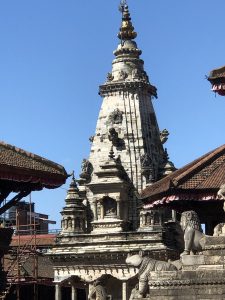Bhaktapur Kathmandu Nepal

Introduction to Bhaktapur
Bhaktapur, often referred to as the “City of Devotees,” is one of the three major cities that make up the Kathmandu Valley in Nepal. Steeped in rich history and cultural heritage, Bhaktapur is a captivating destination that offers visitors a glimpse into the country’s ancient traditions and architectural marvels. From its well-preserved Newari architecture to its vibrant festivals and age-old crafts, Bhaktapur is a true gem that continues to enchant and inspire all who visit.
Historical Significance
Vibrant Past
Bhaktapur’s history dates back to the 12th century when it served as the capital of the Malla Kingdom. During this time, the city flourished as a center of art, culture, and commerce, with the construction of numerous ornate temples, palaces, and public squares that still stand today.
Cultural Crossroads
Strategically located at the intersection of major trade routes, Bhaktapur was a hub for the exchange of ideas, goods, and cultural influences. This rich history is reflected in the city’s architecture, which blends Newari, Hindu, and Buddhist elements, creating a truly unique and captivating aesthetic.
Resilience
Despite facing numerous challenges over the centuries, including natural disasters and political upheavals, Bhaktapur has remained a resilient and vibrant city, preserving its cultural heritage and traditions for future generations to enjoy.
Architectural Marvels
Newari Architecture
Bhaktapur is renowned for its well-preserved Newari architecture, which is characterized by ornate wooden carvings, intricate brick work, and sloping tile roofs. These structures, many of which date back to the 15th and 16th centuries, are a testament to the skill and craftsmanship of the Newari people.
Temple Complexes
The city is home to numerous temple complexes, such as the Nyatapola Temple, which stand as impressive examples of Nepalese religious architecture. These structures, adorned with intricate carvings and ornaments, are not only places of worship but also important cultural landmarks that attract visitors from around the world.
Urban Planning
Bhaktapur’s urban layout, with its winding alleys, courtyards, and public squares, reflects a well-thought-out planning system that prioritized community life and social interaction. This careful design has helped preserve the city’s unique character and atmosphere, making it a truly immersive and unforgettable experience for visitors.
Durbar Square
Royal Palace
The centerpiece of Bhaktapur’s Durbar Square is the impressive 15th-century royal palace, which served as the seat of power for the Malla kings. This grand structure, adorned with intricate carvings and ornaments, is a testament to the architectural and artistic prowess of the Newari people.
Taleju Temple
Towering over the Durbar Square, the Taleju Temple is one of the most important religious sites in Bhaktapur. This five-roofed pagoda-style temple, dedicated to the Hindu goddess Taleju, is a stunning example of Nepalese religious architecture and a must-see for visitors to the city.
Public Courtyards
Surrounding the royal palace and temples are a series of public courtyards and squares, where locals and visitors alike gather to socialize, shop, and participate in the city’s vibrant cultural events and festivals. These spaces are the heart of Bhaktapur, showcasing the community’s rich traditions and way of life.
Pottery and Crafts
Pottery
Bhaktapur is renowned for its traditional pottery-making, a craft that has been passed down through generations of Newari artisans. Visitors can witness skilled potters creating intricate, hand-crafted pieces using centuries-old techniques, and even try their hand at the potter’s wheel.
Woodcarving
The city’s Newari artisans are also renowned for their exceptional woodcarving skills, producing elaborately decorated doors, windows, and other architectural elements that adorn the city’s historic buildings and temples.
Thanka Painting
Bhaktapur is home to a thriving tradition of Thanka painting, a unique form of Tibetan Buddhist art that features intricate, colorful depictions of deities, mandalas, and spiritual symbols. These paintings are not only works of art but also important religious objects.
Metalwork
The city’s artisans also excel in the art of metalwork, crafting a wide range of decorative and functional items, from incense burners and bells to intricate statues and jewelry. These pieces showcase the incredible skill and attention to detail of Bhaktapur’s craftspeople.
Festivals and Celebrations
Bisket Jatra
Bhaktapur’s most famous festival, Bisket Jatra, is a vibrant celebration that marks the Newari New Year. The festival features colorful processions, traditional dances, and the dramatic “Tug of War” event, which symbolizes the battle between good and evil.
Gai Jatra
The Gai Jatra festival, also known as the “Festival of Cows,” is a celebration of life and death. During the festival, participants dress up in masks and costumes, and parade through the streets to honor those who have passed away in the previous year.
Dashain
Bhaktapur also plays host to the Dashain festival, one of the most important Hindu festivals in Nepal. During this time, the city comes alive with vibrant celebrations, elaborate rituals, and the exchange of blessings and gifts between family and community members.
Newari Culture
Vibrant Traditions
The Newari people, who make up the majority of Bhaktapur’s population, have a rich and vibrant cultural heritage that is deeply rooted in the city’s history. From their distinctive architectural styles to their traditional festivals and celebrations, the Newari people have played a vital role in shaping the unique character of Bhaktapur.
Language and Cuisine
The Newari language, a unique and complex tongue, is the primary language spoken in Bhaktapur. The city is also renowned for its traditional Newari cuisine, which features a wide variety of savory and sweet dishes, many of which are prepared using ancient recipes and techniques.
Community Life
At the heart of Newari culture is a strong sense of community and shared identity. Bhaktapur’s residents take great pride in their heritage and work together to preserve their traditions, ensuring that the city’s unique character and way of life are passed down to future generations.
Sustainable Tourism
Responsible Travel
Bhaktapur has embraced a model of sustainable tourism, which aims to preserve the city’s cultural and environmental resources while providing economic opportunities for its residents. Visitors are encouraged to engage in eco-friendly practices, such as using public transportation and supporting local businesses.
Community Involvement
The local community plays a central role in Bhaktapur’s sustainable tourism efforts, with residents actively participating in the preservation and promotion of their cultural heritage. This involvement helps ensure that the benefits of tourism are shared equitably and that the city’s unique character is maintained.
Conservation Initiatives
Bhaktapur has also implemented a range of conservation initiatives, such as the restoration of historic buildings and the promotion of traditional crafts and techniques. These efforts help to safeguard the city’s heritage while also creating economic opportunities for local artisans and businesses.
Challenges and Preservation
Natural Disasters
Bhaktapur has faced numerous challenges over the years, including the devastating earthquakes that have struck the Kathmandu Valley. These natural disasters have caused significant damage to the city’s historic buildings and infrastructure, underscoring the need for ongoing preservation and restoration efforts.
Urbanization and Development
As Bhaktapur’s popularity as a tourist destination has grown, so too have the pressures of urban development and modernization. Striking a balance between progress and the preservation of the city’s cultural heritage is an ongoing challenge that requires careful planning and community engagement.
Conservation Efforts
Fortunately, Bhaktapur has a strong commitment to preservation, with local authorities, heritage organizations, and community members working together to safeguard the city’s historic buildings, traditional crafts, and cultural practices. These conservation efforts are crucial to ensuring that Bhaktapur’s unique identity and legacy are passed down to future generations.
Conclusion and Recommendations
Enduring Legacy
Bhaktapur is a city that has endured the test of time, preserving its rich cultural heritage and architectural wonders for centuries. Its enduring legacy is a testament to the resilience and ingenuity of the Newari people, who have dedicated themselves to safeguarding their unique identity and way of life.
Visitor Recommendations
For visitors to Bhaktapur, we recommend taking the time to immerse yourself in the city’s vibrant culture, exploring its historic sites, and engaging with the local community. Participate in traditional festivals, witness the creation of handcrafted arts and crafts, and savor the flavors of Newari cuisine to truly experience the magic of this captivating destination.
Sustainable Future
As Bhaktapur continues to navigate the challenges of modernization and development, it is crucial that the city maintains its commitment to sustainable and responsible tourism practices. By working together with the local community, policymakers, and conservation organizations, Bhaktapur can ensure that its rich cultural heritage and unique identity are preserved for generations to come.
Many of you have asked which AI software applications we are utilizing. We currently use Gamma.app for content creation and Play.ht for text-to-speech (TTS).
